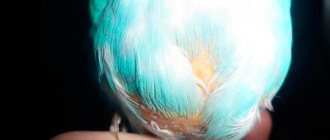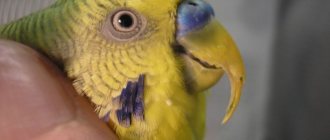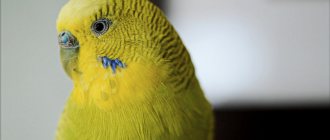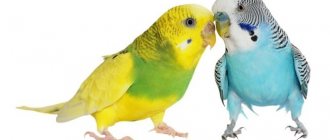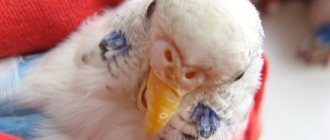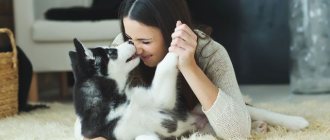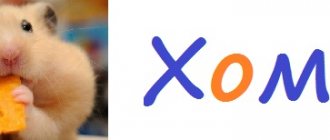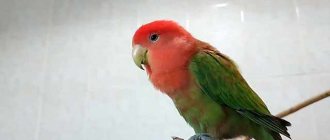Could a budgie eat food without a beak? Answer: no! And breathe, make a nest, clean feathers, defend yourself, climb the cage bars. No again! The beak is very important for the bird. All diseases that affect this part of the body bring a lot of discomfort to feathered pets. Therefore, it is vital to constantly monitor the health of your winged friend's beak. This article is written to help you understand the difficulties you may encounter and how to take the necessary treatments in time. You will also learn what kind of beak should be, what to do if a budgerigar has a long beak, it is peeling, or a growth has formed near it.
Be prepared for the fact that the article shows photographs of diseases that make the appearance of our beloved pets unattractive!
Congenital diseases
It happens that a bird is born with a similar problem. Unfortunately, in most cases it is impossible to correct the situation in such a situation. You can help the chick only by assisting it during feeding. You need to feed every three hours. Over time, the bird will learn to drink and peck food on its own. An adult budgie with congenital beak disease has the following sad characteristics:
- breathing heavily
- rarely flies
- cannot repeat sounds correctly
- The beak opens and closes incorrectly.
The good news is that despite his serious illness, he will be able to live with your help.
Deformations
Although the beak is very hard and firmly attached, it can be deformed. This is a birth defect where a chick is born with the wrong stag shape. More often than not, such birds do not survive because they are not adapted to grasping food. The problem may go away over time if the top and bottom parts are kept close together, otherwise the bird will require special care for the rest of its life.
If a parrot's beak curls at a young age, when the keratoid membrane is plastic, things may still change. When the growth zone is damaged, irreversible complications occur. If the halves are curved or crossed, the shape can be adjusted. It is important to notice the deformation in time and help the animal. Inexperienced owners do not immediately notice that the parrot has a crooked beak. This may be caused by an adult bird colliding with an obstacle such as a windshield.
Knemidocoptosis
Otherwise, this disease is called scabies . It occurs due to parasitic scabies mites on the body of the parrot. As a result, the pet's skin itches. It happens that this disease leads to problems with the beak of budgerigars; it becomes deformed.
If an infection is detected, do not waste time, immediately go to a veterinary clinic to see a specialist!
Fungal plaque
The appearance of plaque on a parrot's beak may be the result of a fungal disease. The general appearance resembles the characteristic white scale on a teapot. The cause of the fungal infection is the scabies mite. The disease is accompanied by regrowth of the beak. This deformation makes eating very difficult. The parrot's body becomes weakened and its behavior becomes irritable.
NOTE!
If it is necessary to remove an overgrown part that is too long, you should contact the clinic. Using special sterile instruments, the veterinarian will correctly trim and file the beak.
Treatment can also be carried out at home. In the early stages, it is not difficult to deal with plaque on a parrot's beak. An effective drug is Neostomozan. The affected areas are treated once every 5 days. The regrown part is coated with Vaseline oil. Excess growths will peel off and fall off on their own.
Beak softening
Causes:
- unbalanced diet,
- fungal, viral or bacterial disease.
If softening of a budgerigar's beak occurs for the first reason, then it is necessary to add vitamins C, A and minerals to the food. To do this, purchase a special multivitamin complex at the pet store and add it to the bird’s diet according to the attached instructions. When sick, use only soft food. Otherwise, the beak will be like an accordion.
If the beak has softened for the second reason, then only a veterinarian can help. They will be prescribed the necessary medications. It should be noted that viruses, fungi and bacteria can not only cause a softened beak, but also the formation of a growth on it.
Description
All representatives of various species of the Parrot family have an impressively strong beak. This is the main tool with which a bird obtains food for itself, grinds it, builds a nest, takes care of its own plumage, and even fights off in case of an enemy attack. Ornithologists believe that it is not only a tactile organ (that is, a kind of “third hand”), but also a “third leg” that helps to move along vertical surfaces, such as wood.
The beak of a parrot reminds anyone with any knowledge of zoology of the teeth of rodents. They are also constantly growing, and the animal is forced to grind them down, crushing almost everything in its path. So our bird needs to gnaw either perches, or tree branches brought by the owner, and then, if it happens, parts of the apartment interior. Otherwise, the beak will lengthen so much that the bird will not be able to feed normally.
What does an overgrown beak look like?
It is known that this organ, in its chemical composition, is formed from keratinized rough tissue, and its growth, first of all, depends on the diet provided to the bird. If there are too many minerals in grain mixtures and supplementary foods, the body part in question will lengthen faster than it should. In this case, the owner just needs to reconsider the menu of his feathered friend, perhaps place a special sharpening stone in the cage, and the problem will be solved.
However, it happens that these measures are not enough. And that's why.
Beak delamination
Why do budgerigars’ beaks sometimes peel or flake off and what to do in such a situation? Again, the main reason for this problem is that your feathered friend’s body lacks vitamins. Pay special attention to nutrition. It must be complete and balanced. If your bird has the wrong diet, its metabolism will inevitably be disrupted. The body no longer has enough calcium. Veterinarians often advise adding sprouted wheat grains and complexes of vitamins and minerals to the main food. In addition, to prevent such beak diseases, give your budgie crushed chalk, feed yeast, and crushed shells.
Hygiene
If you periodically observe the life of a tamed pet, you will certainly notice that it does almost all its daily activities with the help of its beak. Your bird even defends itself exclusively with the help of its strong and powerful beak, which often leaves marks on your hands.
However, without proper attention on your part, misfortune can happen to your budgie. The parrot may want to taste some sharp or simply dangerous object, causing damage to its beak.
Subsequently, some unpleasant disease may develop in the damaged area, threatening the death of the pet. Among the most common injuries and ailments that your budgie can receive due to negligence are a hole in the beak, a tumor, and much more.
Therefore, before your chosen pet settles in the cage you purchased, it should be thoroughly disinfected and treated with boiling water. This is the only way you can guarantee the absence of various pathogens and parasites inside the cell.
Growth on the beak of a budgerigar
Disease factors
reasons are identified :
- hyperkeratosis;
- Knemidocoptosis.
So, we found out why a budgie may develop growths on its nose. Now let's take a closer look at these factors.
As for the second reason, as mentioned earlier, it is scabies, which occurs as a result of infestation by mites.
The first reason is again an avian disease that destroys the wax. As the disease progresses, it changes color over time to increasingly darker tones. Until it takes on a brown tint. At the same time, its size thickens. That is, the area of skin next to the nostrils on the nose of a budgerigar gradually turns black, and can darken very much, until it eventually becomes black-brown in color. It should be noted that the wax may not completely change color, but simply acquire brown spots. The skin grows in different directions. Near the nostrils, it begins to turn upward, blocking them, which entails a disruption in the respiratory processes of the budgie. A bird with this disease demonstrates its anxiety, is nervous, and itches in the hope of getting rid of the growth.
If you do not treat your pet in time, skin growth will lead to death.
The disease is often observed in females, rarely in males.
Symptoms of pharyngitis
The first signs of the disease may differ depending on the type of pharyngitis. They are both local and general in nature. But there are common signs that are characteristic of any type of pharyngitis: sore throat, bad breath, stuffy ears and difficulty swallowing. With an active inflammatory process, an increase in body temperature above 38° can be observed - this is how the body fights a foreign infection. General signs: sweating, poor appetite, weakness, dizziness, fatigue, fever, chills. Some complain of pain and noise in the ears, and discomfort when exposed to loud sounds.
- During acute catarrhal pharyngitis, swelling and redness of the mucous membranes of the larynx appears. Also, red follicles may form on the back wall of the throat, and clear and slightly cloudy mucus may accumulate. There is swelling and redness of the tongue.
- In the purulent form of acute pharyngitis, ulcers with an accumulation of purulent masses appear on the surface of the posterior pharyngeal wall.
Important Tips and Information
Always pay attention to the condition of your bird's beak. Compare it with a photo of a healthy beak on a budgerigar. For example, with the one I attach below.
Monitor the feeder carefully. Remove sharp sticks, pebbles, and pieces of nuts from it in a timely manner, because such things can injure the beak. Every scratch can cause an infectious disease. As a result, the budgerigar's beak will begin to delaminate, it will begin to deteriorate, and a growth may even form.
If the mucous membrane is swollen and very large, then the pet’s body does not have enough vitamin A. This is often also accompanied by the formation of small compactions (granulomas). When the mucous membranes are neglected, white and dense coatings are observed in parrots. Never give any vitamins without veterinary advice. Excess of vitamins, as well as their deficiency, can lead to serious health problems.
Don't panic prematurely. Every year there is significant progress in veterinary medicine. Therefore, most likely, it is possible to help your bird. Contact your doctor in a timely manner, then everything will be fine!
www.zoo-ekzo.ru – Exotic animals
Budgerigar or Budgerigar (Melopsittacus undulatus)
Class - Birds
Order - Parrots
Family – Parrots
Genus – Budgerigars
Appearance
Body length is 17-19.8 cm, sometimes large individuals up to 21-22 cm long are found. Wing length is 9.5-10.5 cm, tail - 8-10 cm; weight 40-45 g. Thanks to the long tail, it appears much larger.
The main color of the plumage is a protective (protective) grass-green color. The front of the head and throat are yellow. On the sides of the head there are elongated purple spots, under which there are three black spots on each side of the throat. The back of the head, the back of the head and the top of the back with dark brown undulations on a yellow background. The waviness on the head changes from fine and gentle to the back into a wider and coarser one. In young birds, the wavy pattern is not as clear as in adults, and begins immediately from the cere. They retain this color until a yellow mask appears. Young birds have a much shorter tail than adults. The tail is long and stepped.
The feathers on the forehead of a male budgerigar have an interesting property: they fluoresce under the influence of ultraviolet rays. The human eye is able to see this glow only in the dark, but parrots can distinguish it even in bright sunlight. Under natural conditions, the presence of fluorescence plays an important role when females choose a nesting partner. An experiment was conducted: two cages with males were illuminated with daylight, but one of them was screened with glass from direct solar ultraviolet radiation. In 9 out of 10 cases, the female chose the male located in an unshielded cage.
The eyes of budgerigars are dark blue, the iris is yellow or white. Parrots' eyes distinguish colors. In addition, they have a wide angle of view, which allows you to see two perspectives at the same time.
The beak of budgerigars is powerful and curved, like a bird of prey. On top it is covered with a strong stratum corneum. At the base, the cere on which the nasal openings are located is strongly visible. The beak of parrots, unlike other birds, is very mobile thanks to the upper jaw, which does not grow together with the skull, but is connected to it by a tendon ligament. The upper jaw is much longer than the lower jaw. The palatine bones are well developed. The tongue of budgerigars is short and thick, slightly rounded. At the tip it is covered with a stratum corneum. Most have narrow horny teeth on the inside of the beak, which, like a file, sharpen the front part of the beak and clear the grains from the husk, and are also used for picking fruits and gnawing them. In chicks, the beak is dark, in adult birds it is straw-yellow, with a greenish tint. Above the beak of birds around the nostrils there is a well-defined cere. The sex of birds is easily distinguished by the color of the wax: in a young male it is purple, in an adult it is bright blue, in a female it is blue (there is a lighter rim around the nostrils), in an adult it is blue or brown.
The neck of parrots is very mobile, since their beak performs the main grasping function. The skeleton of the body, on the contrary, is inactive, since it mainly performs a supporting function.
A parrot's wings serve only for flight and do not support the body at all while moving or sitting. The flight of a budgerigar is slightly arched and resembles the flight of a swallow. When landing, the wings bend downward, making it similar to the landing of a quail.
The paws are grayish-blue, very strong and tenacious, the claws are dark blue or black. Each paw has 4 long, curved and rather sharp toes, 2 of which point forward and 2 point back. Thanks to this design, parrots very dexterously climb branches, walk on the ground, and can also grab various objects with their paws, including food, and carry them or hold them near their beak.
Habitat
This parrot lives in Australia and on some adjacent islands, where it is the most numerous of all Australian parrots. Budgerigars nest mainly in semi-desert parts of the mainland, where flocks of millions can sometimes be found.
They inhabit semi-desert and steppe areas, preferring areas with sparse trees.
In nature
Under natural conditions, the daily routine of budgerigars is simple. In the morning they always visit a watering hole, then move around the area in search of food, pecking at cereals and seeds of wild herbs. Today, the bulk of their diet consists of wheat grains from the fields of Australia and weed seeds. Before evening falls, the flock moves to convenient trees and bushes, where the parrots settle down for the night.
Water plays a big role in the life of parrots. One bird drinks a little, but a large flock needs a fairly large, and most importantly, stable source of water, so they prefer to stay close to bodies of water. In winter, when drought comes to the semi-desert, flocks migrate to the northern part of the mainland.
Reproduction
In nature, budgies breed all year round. They nest in tree hollows. The female lays from 4 to 18 white eggs, directly at the bottom of the hollow without litter, and incubates them for 18-25 days. The male can feed her at this time. Parrot chicks appear unfeathered and blind, by about ten days of age they begin to see, and at the age of a month they are completely feathered and leave the nest, but sometimes they maintain contact with their parents for several days or weeks.
Captivity
Budgerigars are the most common species of parrot in captivity.
To keep one pair of budgies, a cage about 60 cm long, 40 cm wide and the same height is enough. For two pairs, it is recommended to increase the length of the cage to 1 m. From the variety of cages sold in stores and markets, you should choose square or rectangular ones. Round cages look beautiful, but are quite inconvenient to maintain and can cause stress for birds. Cages of various original shapes in the form of Chinese houses, rhombuses, pagodas look beautiful, birds feel good in them, but a lot of garbage spills out of them, and they are also inconvenient to clean.
Cages must be made of stainless steel or have a polymer coating. The latter look beautiful, and the twigs are warmer to the touch, absorb less odor and wash well.
As soon as you bring your budgie home from the store, allow him to immediately explore his new home. The cage should stand or hang in a place free from drafts, preferably at eye level. If the cage is too low, the parrot may become afraid of a person bending over it, and remain timid. If it is too high, you will lose contact with your charge, and this will again make it difficult for the parrot to get used to the new environment.
From the carrier in which it was delivered from the store, the parrot must move into the cage on its own. Make sure that he does not have the opportunity to fly into the room, otherwise the first moment of living for the parrot in a new home will begin with the shock of the unfolding pursuit of him.
At first, leave the parrot alone so that it can calmly look around and get to know its home. Stress him less with your presence during this period. Forget about cleaning the cage in the first week. Let the bird feel confident in the reliability and safety of its new home.
The first two to three weeks are a time of gradual rapprochement with the bird. She will get used to you faster if you keep some distance from her, mind your own business and talk to the parrot from time to time. And if he is young enough, then soon his curiosity will exceed his fears, and he will be more and more inclined to contact you.
After two to three weeks, talk to the bird constantly. Repeat each phrase repeatedly. Find opportunities to talk to your parrot more often throughout the day. If you stand next to the cage, and the parrot approaches you on the perch, give him something tasty for this, push it through the bars of the cage, holding it in your hand. If your parrot is already boldly taking treats, take the next step: open the cage door slightly and offer him food from the palm of your hand. Patience and gentle handling of the bird are your main trump cards in this game.
But then he finally sat on your palm or finger. Try to carefully lift it out. If he continues to sit quietly, walk him around the room and put him back in the cage. After several such walks, the bird will have its first idea of the size of the room, and it will learn to find the entrance to the cage.
All of the above terms for establishing contact with a parrot are designed for very young birds.
The situation is different with young birds aged four to eight months. Such birds lived for quite a long time with their parents or other parrots and in their behavior were already quite clearly oriented towards the laws of behavior in the flock. When such a bird finds itself alone with a new person, it naturally experiences fear. She needs to be treated with even more restraint and caution, and to get used to and become attached to a person she needs the same number of months as a young parrot takes weeks. It takes even more time to tame an adult budgerigar, which previously lived among its own kind; some of them will never fully get used to a person, and will flutter around the cage in fear whenever they approach. It is better to keep such birds in pairs or in a flock, so they will become more trusting, but never tame or talking. And if you have already got yourself an adult parrot and want to tame it and teach it to speak, you need to be as patient as possible!
Well, if your bird flies freely around the room, gently pinches your earlobe, pulls your hair or eyebrows with its beak - it is showing you its love and affection. That's fine! This means you are worthy of both her affection and her love. In cases with particularly timid parrots, one of the following two methods often helps to at least wean the bird from running around the cage in fear or hiding in a corner out of fear. Several times a week, remove all food from the cage for three to four hours. It is best to do this after cleaning the cage, when there really is not a grain left in it. After this, open the door slightly and offer the parrot some food or a cob of millet in your palm. Delicious food and your gentle admonitions can help him overcome his fear and peck a couple of grains from the palm of his hand. Keep your hand still and continue talking to him. Over time, he will begin to trust you more and more, and even if he does not become completely tame, he will be a sociable and fearless parrot.
Another method is to take the parrot in your hand, talking to it, and bathe it in a pre-prepared warm bath with a weak solution of potassium permanganate (prevention of various diseases and feather loss). This procedure must be repeated once a week. There is no need to wet your head.
After bathing, the bird should be wrapped in a warm small towel and kept near you for two to two and a half hours, scratching the parrot from time to time in the area of the cheeks, neck and head, talking affectionately to it and calling it by name. You can hang some beads, rustling or shiny objects on yourself. This will certainly attract the bird's attention and arouse its curiosity. Soon the timid bird can turn into a tame, sociable and talkative parrot.
In order for a parrot to learn to talk, its training must begin as early as possible, from the very youth of its life. During the learning process, the bird becomes more and more attached to the person.
In the wild, in a flock, a young budgie would have adopted from its comrades all the methods of expression available to it. This is vital for him and helps, for example, to understand danger signals and behave correctly in a pack. In the afternoon or evening before bedtime, when the birds are full and tired from the bustle of the day, they sit closely on tree branches, scratch each other with their beaks and talk gently and quietly. Young parrots learn all these rules of behavior in a flock from more experienced parrots. Our pet parrot also has similar hours of rest and peace of mind. This is the time we should use most to communicate with the parrot and train him. Depending on the abilities and predisposition, our feathered student can repeat the first word in two to four weeks, or maybe after several months. By the way, the parrot likes children's and women's voices more than low men's voices. Masters of the conversational genre among budgerigars have up to a hundred words in their vocabulary, operate with entire sentences, and in connection with specific events, and can even recite poetry. Owners of such parrots assume that their pets are almost incapable of thinking. A bird that has learned to speak, as a rule, continues to learn this throughout its life, provided, of course, that it continues to be taught.
For those who have little time for such activities, it is recommended to use a tape recorder to play back pre-recorded words and sentences. When you leave, turn on the tape recorder during your absence. Although direct training with the bird is more effective and brings more joy to its owners.
Feeding
The main food for budgerigars is a grain mixture consisting of seeds of cultivated and wild plants. But grain feed alone does not have a complete set of all the nutrients necessary for the normal functioning of parrots. Therefore, it is periodically necessary to give the birds additional and mineral feeds, but in smaller quantities than grains. The favorite grain food included in the mixture for feeding budgies is millet - white, yellow, red. It makes up 65% of the grain mixture. Replacing millet with millet is unacceptable, as this will lead to serious diseases of the gastrointestinal tract. Another component is oats - 20%. If you don't have oats, you can replace them with oatmeal.
The third component of the grain mixture is canary seed - 10% of the entire mixture. This is the most nutritious food for budgies, containing protein, fats, phosphate of lime, a certain amount of mineral salts and partially replacing a boiled chicken egg. However, excessive consumption of canary seed can cause obesity in your budgie.
The mixture for feeding budgies must also include small sunflower or hemp seeds (about 5%). Small sunflowers should be fed raw. If these foods are difficult to eat, they should be given crushed.
Budgerigars also readily eat the seeds of weeds - plantain and dandelion, which can be stored for future use throughout the winter. Plantain spikelets should be collected in bunches and hung in a dry place to dry. Dandelion seeds are collected when white fluff appears on the heads. It needs to be cut with scissors and the seeds collected in bags.
In addition to the grain mixture, budgies need to be given various additional foods: porridge, boiled chicken eggs, low-fat cottage cheese. The porridge must be crumbly, otherwise the parrots will not eat it. Birds eat well porridge made from crushed rice with the addition of millet. Parrots must be accustomed to this food from an early age, otherwise adult birds will be reluctant to eat it.
A hard-boiled fresh chicken egg is an excellent nutritious and vitamin-rich food for young budgerigars, as well as during the nesting period. It contains protein, fats, calcium, phosphorus, sodium and vitamins A, B, D. The egg should be boiled for 7-8 minutes. A finely chopped, slightly salted chicken egg mixed with semolina or crushed white breadcrumbs is given at the rate of 4-5 g per parrot.
Fresh cottage cheese is fed in dry form mainly during the breeding period of budgerigars. In order to make the cottage cheese dry, it is sprinkled with semolina, chopped with a knife and mixed. You can add a little grated carrot to this mixture - it is necessary for feeding budgies. Parrots eat this food with great appetite.
Fresh grated carrots, sometimes mixed with white breadcrumbs, are a healthy, nutritious food for budgies. It is prepared quite simply. Grated carrots are mixed with crushed white breadcrumbs in such a ratio that they do not stick to your fingers when stirring. You can add a little crushed dried herbs. Grated carrots are indispensable in winter and spring, when there is little greenery.
It is very useful to feed parrots, especially during the period of feeding chicks, sprouted grains of wheat, oats, barley, and rye without soil. Such grains contain a lot of vitamins E and B. To germinate, rinse the grains in the morning with warm water, drain it and refill it, leaving it until the evening. Then rinse the swollen seeds in a sieve under running water, then place in a vessel with water and leave until the morning. The next day the grains will “hatch” and small quantities can be fed to the parrots. Sprouted grains should be washed daily with water so that they do not dry out and lose their beneficial properties.
Green food, which is a source of vitamins and mineral salts for budgerigars, is given to birds in moderation. Parrots are very fond of apples, dandelion leaves, wood lice, lettuce, and cabbage. Parsley and dill should not be given - it acts like poison on parrots.
By observing your feathered pets you can determine their appetite. Typically, a budgie needs 20-25 g of grain mixture (a full tablespoon) per day. If this is not enough, you can increase the rate. Young birds that have just left the nest consume more food than adults.
The grain mixture should be given so much that the budgies eat it without leaving a trace. Given a large amount of food, they will seek out their favorite seeds and leave others untouched. If you put less mixture in the feeder than required, the parrots will remain hungry. Both are harmful.
It is better to provide additional feed every other day. It is better to do this in the morning so that they do not spoil or turn sour. At night, soft food and mixtures should be removed from the cage. However, these foods should not be given all together. It is better to take turns in feeding budgies.
Vegetables, fruits, and herbs should be given to budgies daily. A mineral stone or chalk should also be in the cage at all times.
Breeding
Budgerigars, with proper maintenance and care, successfully reproduce in cages. The best time of year for breeding budgies is spring and summer, when there is a lot of light, warmth, and greenery. In autumn and winter, budgerigars can also breed, but in order for the chicks to grow into full-fledged birds, special conditions are needed for breeding budgerigars. It is necessary to increase the duration of daylight hours to 12-14 hours a day due to electric lighting, maintain a constant temperature in the room of +20-22 degrees, greens should be grown all the time, and there should always be fresh linden or rowan branches in the cage.
For breeding budgerigars, young birds are selected, since it is more difficult to obtain offspring from old ones. It is better when young pairs of parrots are taken from parents who hatch and feed the chicks well. The use of random birds, especially females purchased from unknown persons, very rarely gives positive results. It is better to select pairs in the fall, when the parrots are transferred to wintering. In this case, you need to pay attention to the general development of the body, mobility, and the usefulness of plumage - evidence of the physical health of the parrots. Birds should be well-fed, but not fat. Weak and thin birds should not be allowed to breed: they do not sit well on eggs, and, as a rule, do not hatch chicks.
Budgerigars are gregarious birds; in natural conditions they live in large groups. The tendency to this also manifests itself when they are kept in cells. Parrots in a group are more active and mobile. It is better when 2-3 pairs of budgies are kept in a large cage. When completing groups, it is recommended to purchase females and males from different places. Inbreeding causes a decrease in egg production and egg fertilization; the chicks are born weak, often with congenital defects, and develop poorly. Having reached adulthood, they are also characterized by reduced viability.
Budgerigars can begin nesting at 8-9 months, but this should not be allowed. The most acceptable age for starting to participate in breeding is over one year. Otherwise, a young female, whose body has not yet formed, may die when laying her first egg. The highest fertility occurs in budgies at 2-3 years of age.
If a pair is successfully selected for breeding budgies, the birds are always together and know each other well. The parrot constantly looks after the female. Attachment is fixed for life; only death can separate them.
In order for parrots to begin to reproduce successfully, they must be well prepared for this. They should fly a lot 2-4 weeks before mating. If parrots fly a lot, their metabolism increases, their appetite improves, and their muscles become stronger. During this period, in addition to the grain mixture, you should give a boiled egg, low-fat cottage cheese, sprouted grains - this contributes to the good condition of the birds. There must also be a mineral stone or chalk in the cage.
In a cage used for breeding budgies, in addition to the main door, there should be another door on the side wall where the nest box is hung. It must be spacious enough, otherwise the chicks will be cramped. The female will make the hole in the sawdust herself.
Having prepared a cage with a nesting box and placed a couple of parrots there, you need to carefully observe the birds. If the pair is chosen successfully, the behavior of the parrots becomes restless. After 8-10 days, the female lays her first egg. The number of eggs in a clutch is 6-8, sometimes 10. The eggs of budgerigars are matte white in color, oval in shape. Having laid 1-2 eggs and started hatching, the female continues laying (usually every other day).
During the incubation period, the male feeds the female, sits on a perch near the nest, emitting a melodic chirping sound.
The first chick appears 17-18 days after incubation, the rest alternately every other day. A day or two before the chicks appear, budgies need to increase the supply of food, and then give it, counting on the addition of the family, and more steamed oats, and definitely a chicken egg. With the addition of chicks, the amount of grain mixture is gradually increased.
Initially, the chicks are fed by the female, and the male brings her food. The food swallowed by the female is regurgitated, after which she gives it to the chick.
A week later, the chicks’ eyes open, by 10 days stumps of feathers begin to form on the back of their heads, and by 13 days they are completely covered with down feathers. By the end of the third week, the parrots have feathers on their backs and heads, and their wings are also covered with feathers. At this time they are very shy. By the age of one month, budgerigars are completely covered with feathers.
At 35-40 days, young parrots are already flying freely and getting their own food. At this time, they need to be placed in another cage.
Life expectancy in captivity is up to 25 years.
Sources of tick infection
Factors that create conditions for scabies mite infection:
- pet stores, where there are not always normal conditions for keeping birds, a proper diet;
- branches brought from the street for perches that have not been properly processed;
- purchased used bird cage or supplies;
- low-quality feed or unbalanced diet;
- deterioration of immunity. A healthy bird can be a carrier of a mite, but not get sick;
- frequent stress.
Prevention
Everyone knows the truth: it is easier to avoid a disease than to treat it later. When a parrot's beak peels off, in most cases, this indicates the owner's inattention to his pet. Try to protect the bird from such an unpleasant condition. Create optimal conditions for her:
- regularly clean and disinfect the cage and all equipment in it;
- replace old branches with new ones, previously scalded with boiling water;
- provide the parrot with constant access to mineral supplements (sand, sepia, mineral stone);
- maintain optimal humidity in the room, do not allow dry air, especially during the heating season, and especially do not install a cage with a bird near heating devices;
- provide a varied diet and conduct vitamin therapy courses twice a year;
- the perches in the cage should be made of wood, it is best if they are strong branches with bark - thanks to such a rough structure, the bird will wear down its beak and claws;
- toys should also be wooden;
- Lighting is very important for birds, in winter - at least 8 hours, in summer - at least 12 hours;
- Examine your pet regularly to notice an impending illness in time and begin to take action.
Exceptions
Varieties of budgerigars are divided into 2 large groups. Group 1 includes all types of birds with normal waviness (different colors have their own subgroups). Group 2 includes breeds of parrots that were subject to various mutations and did not retain the wavy pattern. These include the following types:
- birds with opaline color;
- pieds;
- albinos;
- lutinos;
- lacewings;
- harlequins and others.
Parrots of mutation breeds have their own characteristics, so determining their age can be more difficult. Each type has its own characteristic features, namely:
- the wavy pattern on the head is almost always absent; the “cap” adorns the head of both juveniles and adults;
- eyes remain black from birth until old age;
- Lutinos and albinos have red eyes throughout their lives;
- the beak is yellow at birth, or the black color disappears during the first 3-4 weeks of life;
- the cere changes color in the first months only in females (its colors are the same as in ordinary wavy breeds), and males at any age retain the beak pink, white or blue.
Therefore, in recessively variegated and pure parrots, age is determined by the following indicators:
- tail length;
- size of the individual;
- condition of the skin on the paws;
- density and structure of plumage.
Non-standard cases also occur among birds from group 1 with normal undulation. There are chicks that were born with an iris around the eyes or with a bright blue cere. In order not to make a mistake, it is important to consider the parrot according to all the main parameters.
